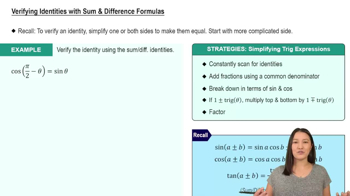Textbook Question
In Exercises 35–38, find the exact value of the following under the given conditions:d. sin 2α 1 3𝝅 1 3𝝅 sin α =﹣ ------ , 𝝅 < α < ------- , and cos β =﹣------ , 𝝅 < β < ---------. 3 2 3 2
562
views






